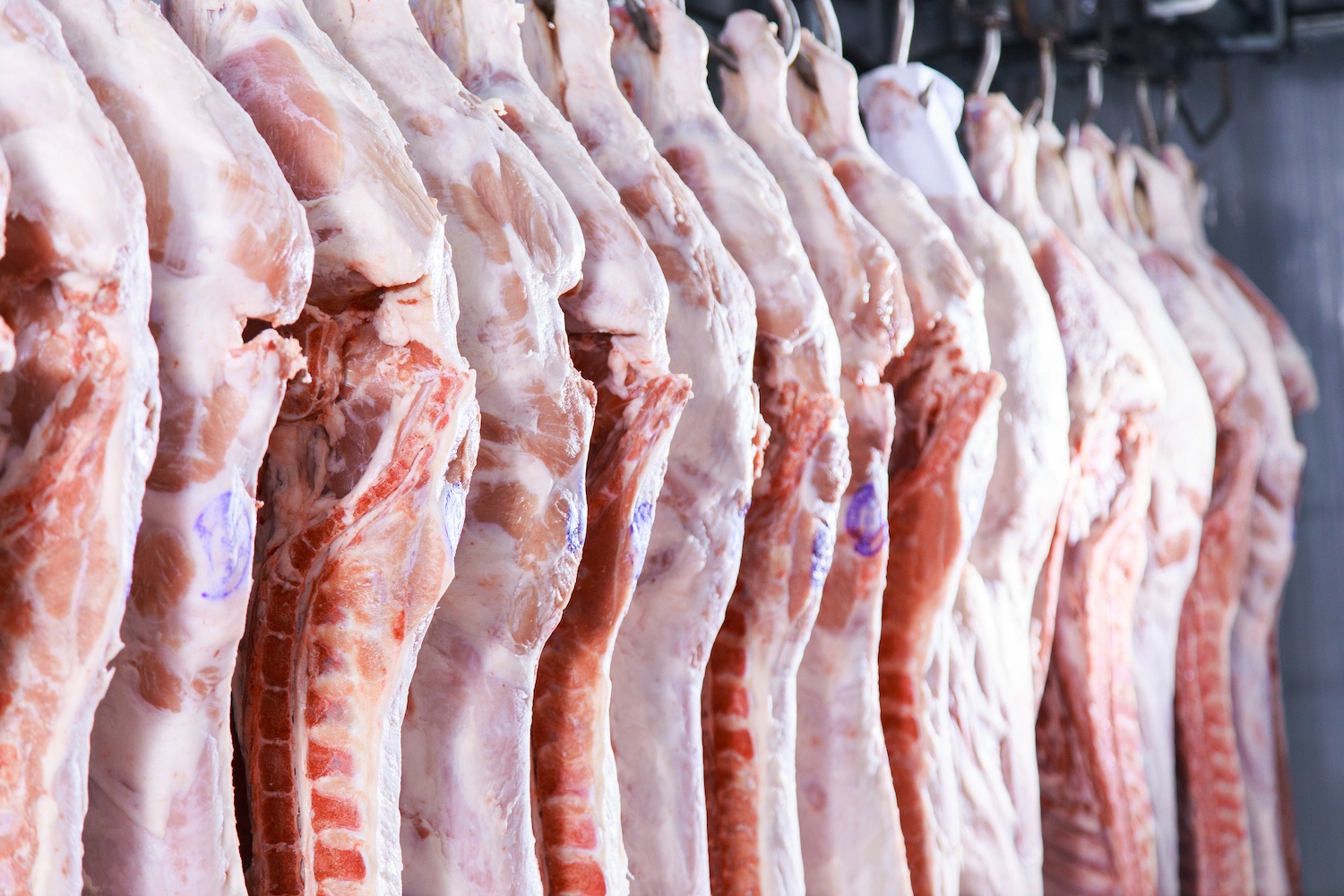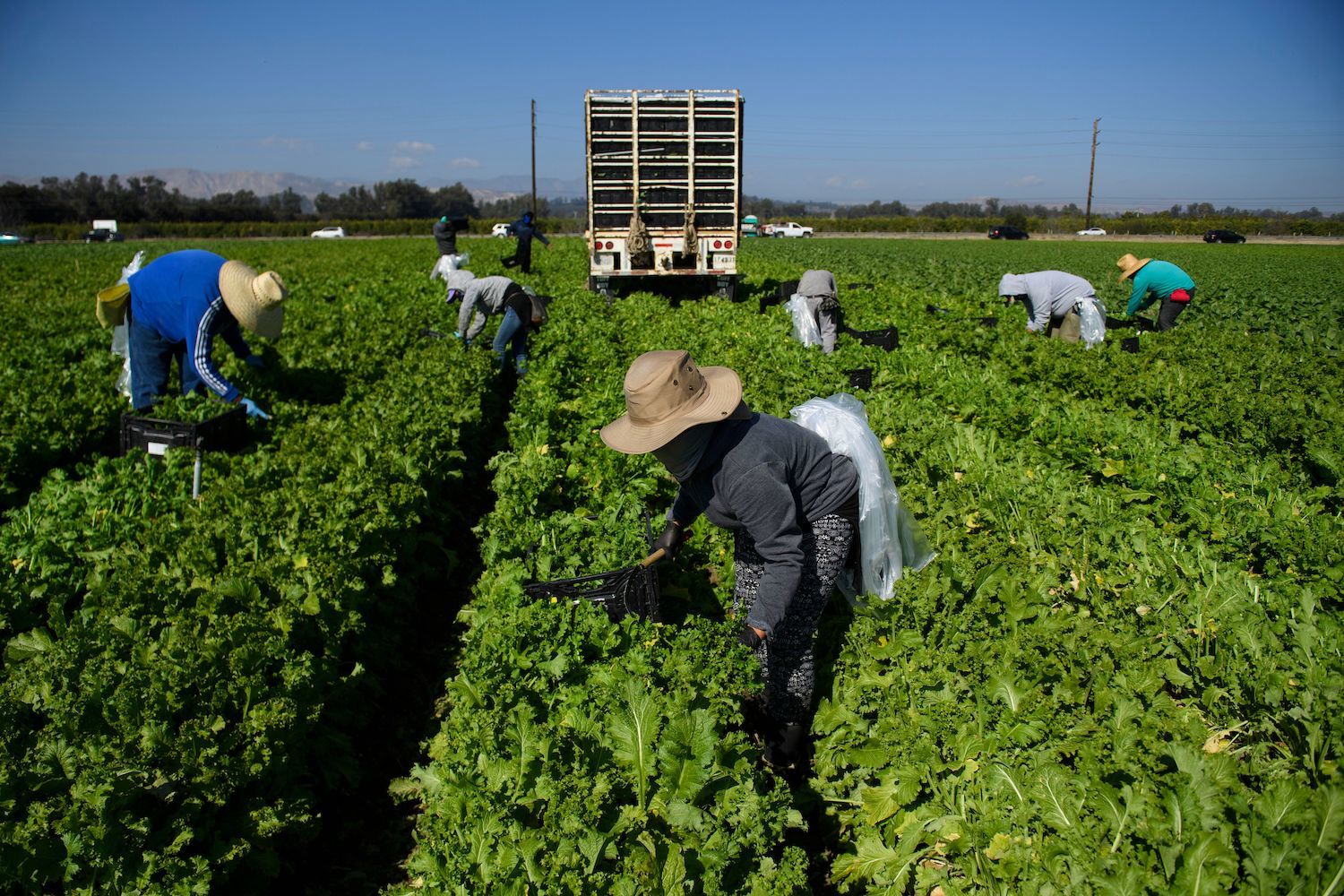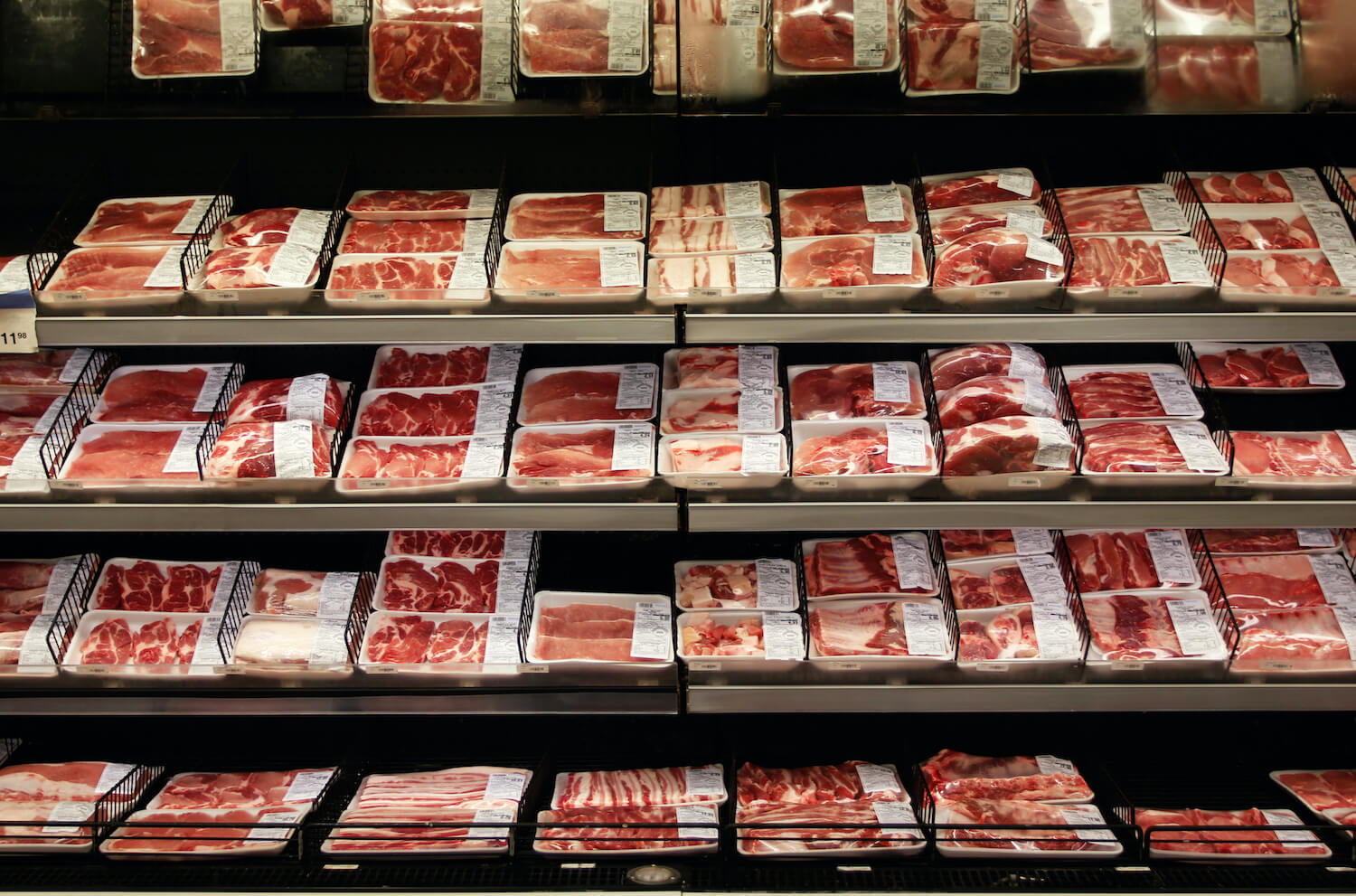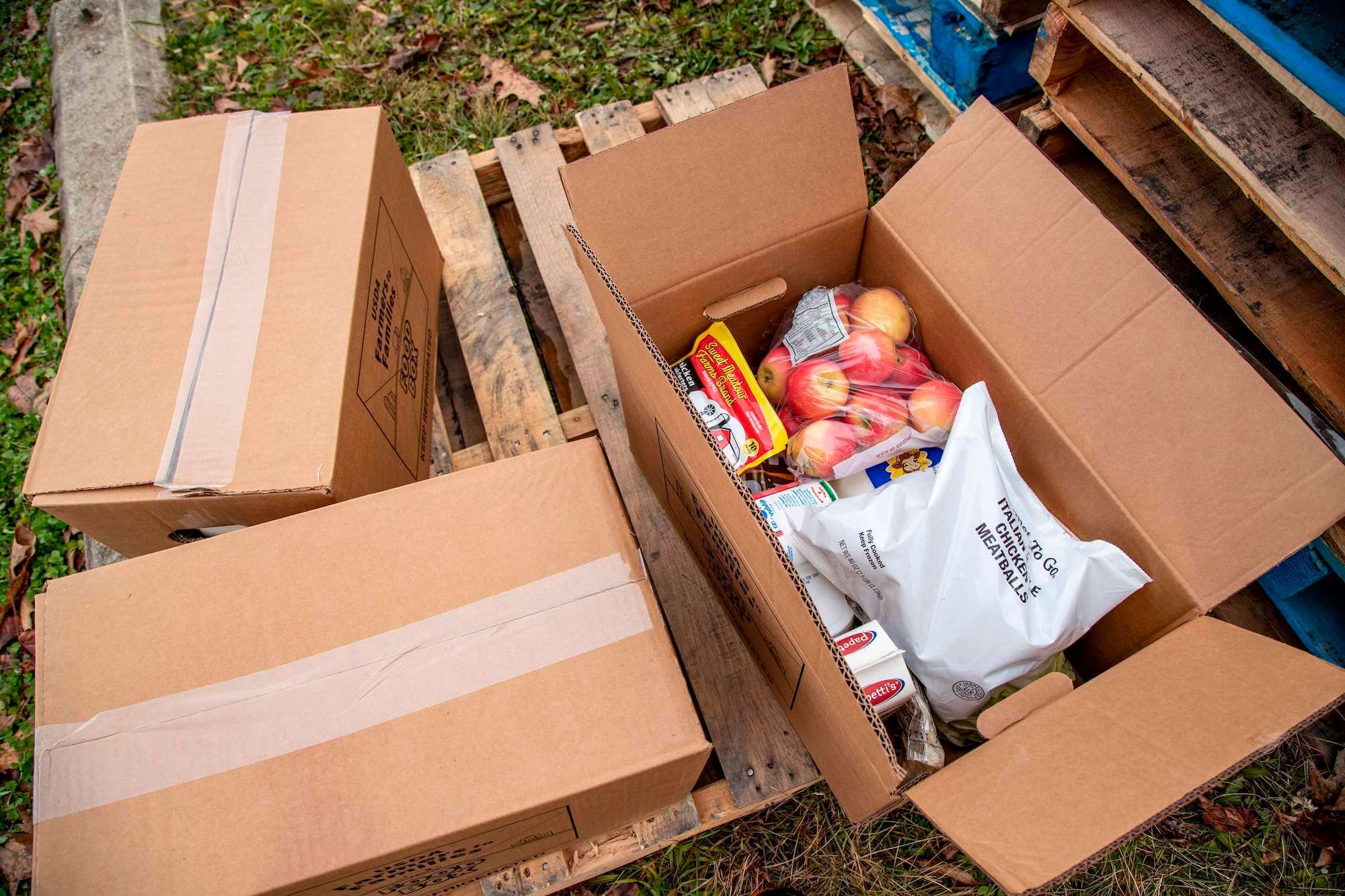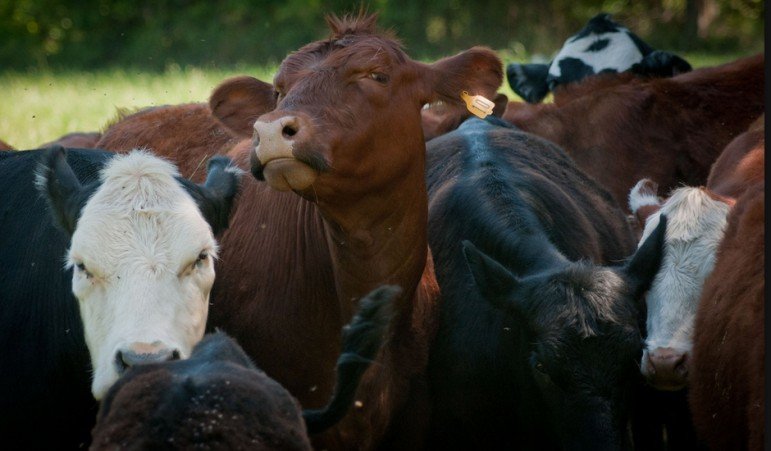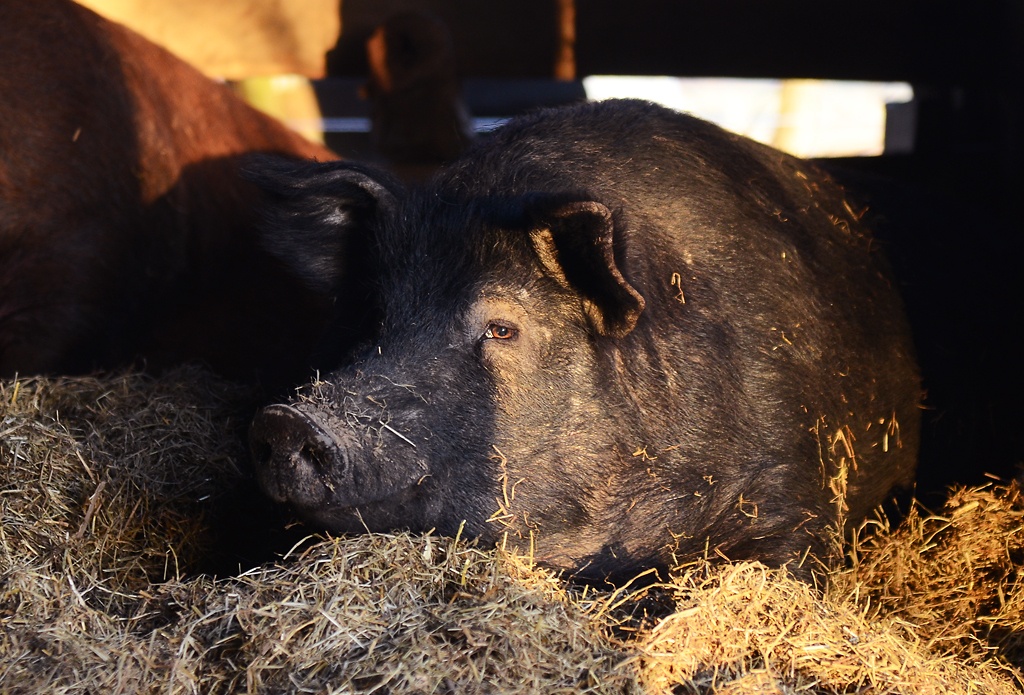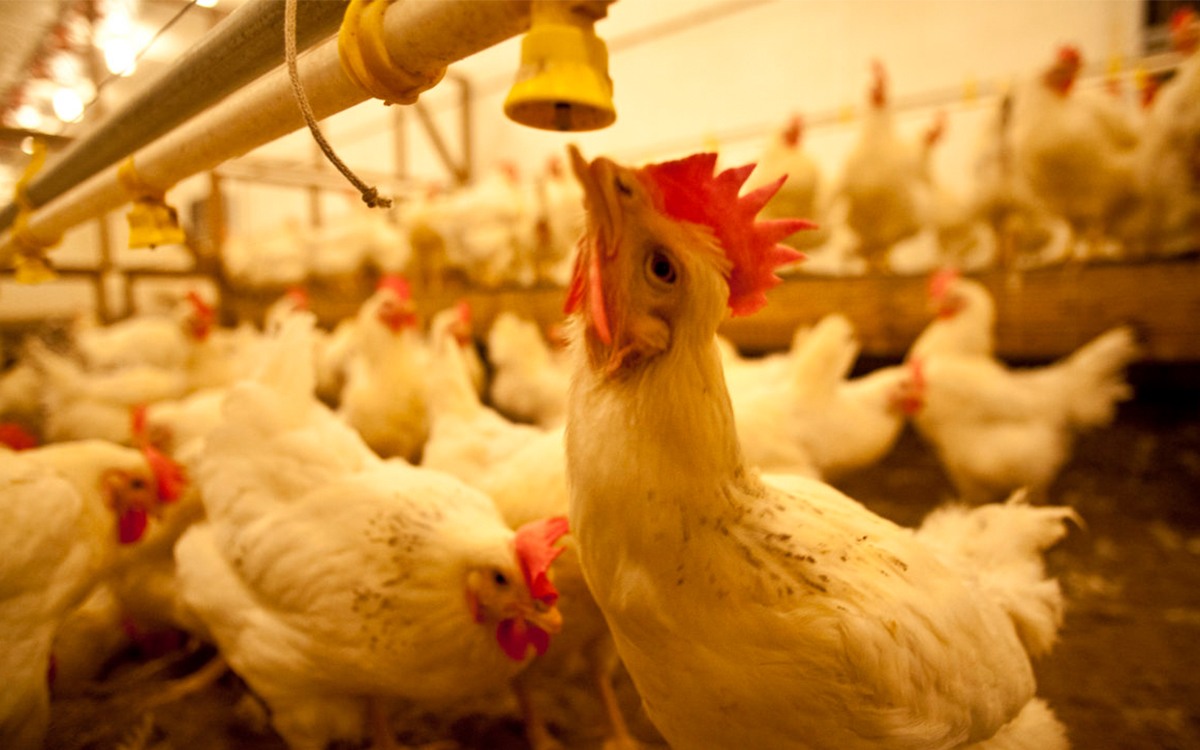
Photo by Steve Matzker for Investigate Midwest
According to a USDA report, the percentage of cattle and hogs sold under contract has nearly doubled from 1997 to 2017.
This article is republished from The Midwest Center for Investigative Reporting. Read the original article here.
Pictured above: Chickens raised at the University of Illinois Urbana-Champaign.
Most poultry, eggs and hogs in the U.S. are sold under production contracts, according to data from the U.S. Department of Agriculture.
Under production contracts, farmers raise livestock owned by someone else — usually a meatpacking company — who pays for some of the cost of raising the animals, such as feed and veterinary care.
Marketing contracts, more common for crop producers, obligate farmers to sell a certain percentage of their crop to a specific buyer.
A September 2021 press release from the Biden administration blamed production contracts for low prices in the cattle industry, saying they “lock independent livestock producers into prices that aren’t the product of free and fair negotiation.”
A bipartisan bill introduced in the U.S. Senate seeks to raise cattle prices by increasing price transparency to give farmers more negotiating power and by requiring meatpackers to purchase a certain percentage of their animals on the cash market instead of under contracts.
The percentage of cattle and hogs sold under contract has nearly doubled from 1997 to 2017, according to the USDA.

